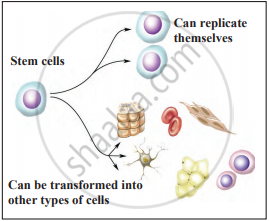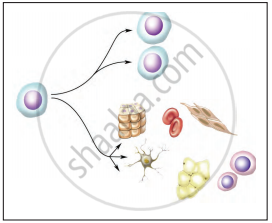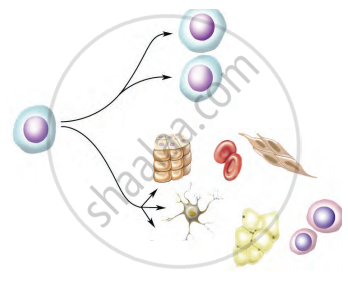Advertisements
Advertisements
प्रश्न
Explain the statement.
The revolutionary phenomenon in biotechnology after cloning is stem cell research.
उत्तर
- Stem cell research has the potential of bringing about fundamental changes in the medical science.
- Stem Cell therapy has the following applications:
a. Cell therapy: In case of medical conditions like myocardial infarction, diabetes, Alzheimer’s disease, Parkinson’s disease, etc., stem cells are used to replace dead cells.
b. In conditions like anemia, thalassemia and leukemia, where blood count is affected, stem cells are used to produce new blood cells. This is known as regenerative cell therapy.
c. Organ transplantation: Advances in research may make it possible to produce organs like liver or kidney from stem cells to be used for transplantation in case of organ failure.
Hence, it is rightly said that the revolutionary phenomenon in biotechnology after cloning is stem cell research.
संबंधित प्रश्न
Write the correct answer in blank circles.
At the earliest stage of development, the organism is in the form of a mass of a cell, which are almost alike, those cells are called ____________.
Which of the following factors are considered or need to be paid attention to during organ transplantation?
_____________ is the revolutionary event in biotechnology after cloning.
Cell _____________ starts from 14th day of conception.
____________ are present in the umbilical cord by which the foetus is joined to the uterus of the mother.
For the purpose of preservation stem cell samples are kept in __________.
Zygote is formed by union of male and female gametes. Name the cells that are present at the initial stage of development.
Define.
Stem cell
State two types of stem cells.
What is the importance of stem cells in medical science?
Observe the given figure and answer the following questions.

- What is shown in the figure?
- What can the stem cells make in this figure?
- What can these stem cells transform into?
Identify the given figure and label it.

______ cells are undifferentiated mass of cells.
Name the types of stem cells
Distinguish between
undifferentiated cells and differentiated cells

- Which process is shown in the given diagram?
- What is the importance of this process?
- Which organs can be transplanted by this process?
Explain the following term:
Stem cells
